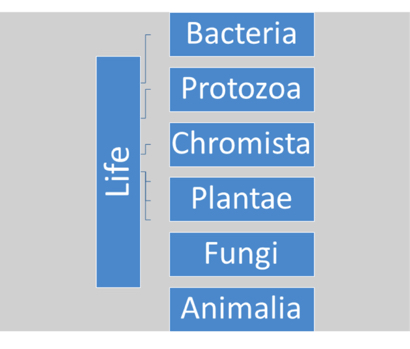
Image by: Nongkran_ch, ©2016 Getty Images
We have been accumulating electronic documents in shared drives since the innovation of networked computers and file servers in the early 1980s. Folders and sub-folders defined in shared or network drives were developed to identify the subject (or topic) of the document types stored. Most of these documents are unstructured (e.g., text, spreadsheets, presentations, PDF, etc.) and the vast majority are unclassified (that is, lacking an explicit tie to a formal classification scheme). The structures were based on how an individual thought they should be stored for his/her personal use.
These subject-oriented folder and naming conventions are typically very subjective; it is difficult to remember or deduce the thought process that took place when the folder and file names were created. Over time, different people had different ideas about how the shared drives and folders should be organized and, therefore, have been reorganized and/or renamed multiple times. Unfortunately, new structures are often created and the old structures become orphaned—rarely, if ever, accessed. Employees don’t always follow established “rules,” resulting in misfiles, duplicates and orphans everywhere. Most organizations have retained all documents “just in case.” We are at a crossroad where organizations are recognizing the cost of retaining vast quantities of valueless documents. The question is: "Where to begin?"
The answer is to develop a classification or taxonomy that all content filing systems follow consistently. Wikipedia defines taxonomy as “the practice and science of classification of things or concepts, including the principles that underlie such classification.” Taxonomy is derived from ancient Greek: τάξις taxis, "arrangement," and -νομία -nomia, "method”—a method of arranging.
Classification is a general process related to categorization, the process in which ideas and objects are recognized, differentiated and understood. A classification scheme is an approach to accomplishing classification.

Main classification types for business content
Classification of business activities is a powerful tool for the management of records (content) and to understand the relationship between a business and its records. Classifications related to business functions provides a systematic process for records and information management. Developing a functional classification scheme identifies the organization’s activities within the business framework of its mission or purpose—a representation of the organization’s functions, activities and transactions.
Benefits of functional classification schemes include:
How powerful can functional classifications be? One of our clients had a subject- and location-based file plan with 10,000 records series. We moved them to a functional classification of less than 300 record series. As a user, would you rather look for retention rules in documents with 10,000 entries or 300?
Classification schemes are usually supported by tools, such as vocabulary controls, file plans, thesauri and disposition authorities.
Thesaurus
A thesaurus is a controlled list of terms linked together by hierarchical, associative or equivalence relationships of terms. It is a tool that supports the classification and management of records, usually at the file level to ensure classification terms are used consistently throughout a recordkeeping (filing) system in a specific business context. The terms are structured by the relationships between terms. Examples of relationships include broader term, narrower term, related term, preferred/use for and non-preferred/use. A thesaurus is generally an alphabetical representation of the classification scheme.
Thesauri based on business functions enable records to be classified according to the context in which they are created and used. In contrast to a subject approach, records are classified according to why they exist rather than what they are about.
Vocabulary controls are developed to meet the complexity of content being managed; they identify organization-specific definitions or usage of terms. Controlled vocabularies provide the ability to cross-reference terms (such as related terms, synonyms, preferred terms) and identify terms with greater precision. For example, a preferred term of “toilet” would have non-preferred terms of “bathroom,” “head,” “loo” and “john.” Thesauri are particularly useful to localize languages (e.g., British and American English) and to standardize usages after mergers.
File plan
A file plan is a tool for classifying content to bring together records with common characteristics. The file plan is derived from a business classification scheme to provide a framework for classifying records according to the business functions and activities which generate them. Often, these are developed at the organizational level, such as a division or department. The file plan determines how the record/documents are filed and the retention requirements that apply. The two need to be linked at the right level to be able to apply retention.
There are four compelling reasons for having a file plan:
1. Provides quick and easy access to records and information relating to the same function and activity, irrespective of which business units produces or receives them. A subset of the classification scheme based on the categories applicable to a business unit creates a very user- friendly file plan.
2. Provides consistent retention and disposal of records—across all record formats and in all digital and physical locations. A file plan derived from the classification scheme can be easily integrated with a records retention schedule by assigning retention periods to classification categories. This makes it easier to locate and remove records, which are time- or event-based, minimizing the need for complex and time-consuming review and weeding processes. It is difficult to apply retention rules to subject files.
3. “Case files” are not identified in classification schemes or taxonomies. They are included in file plans and retention schedules since they are aggregations of documents/records.
4. Links to the disposition authority so that disposition criteria are at the user’s fingertips.
Steve Krug wrote “Don’t make me think” as a common sense approach to web usability. When designing your classification structures, keep this simple concept in mind. Your end users will thank you!
The answer is to develop a classification or taxonomy that all content filing systems follow consistently. Wikipedia defines taxonomy as “the practice and science of classification of things or concepts, including the principles that underlie such classification.” Taxonomy is derived from ancient Greek: τάξις taxis, "arrangement," and -νομία -nomia, "method”—a method of arranging.
Classification is a general process related to categorization, the process in which ideas and objects are recognized, differentiated and understood. A classification scheme is an approach to accomplishing classification.

Figure 1: Six Kingdoms of Life on Earth - Cavalier-Smith 1998
A taxonomy or classification scheme is the basis for organizing content to facilitate the lifecycle management of recorded information. It is all about organizing and classifying. The following figure represents the classification scheme for all life on Earth.
If all life can be categorized into six top-level terms, certainly, we can simplify our organization's classification structures.
Best practices for records and information management recommend seven to 12 top-level functions, with no more than three levels below the top-level functions. Human ability to comprehend a “list” breaks down with more than 15 levels. Beyond just three levels, our ability to make sense of structure and navigate it begins to break down.
It is a simple process to make things complex, but a complex process to make things simple.
Main classification types for business content
- Subject: Based on the topic or subject terms, generally arranged in alphabetical order, such as vendor name.
- Organizational: Reflects the organizational structure, is familiar to users and often mimics the paper-based filing structures.
- Functional: Based on the high-level purpose or responsibility managed by the organization to fulfill its goals, the activities or major tasks performed to accomplish the functions and transactions or tasks to group and identify document and record types.
Classification of business activities is a powerful tool for the management of records (content) and to understand the relationship between a business and its records. Classifications related to business functions provides a systematic process for records and information management. Developing a functional classification scheme identifies the organization’s activities within the business framework of its mission or purpose—a representation of the organization’s functions, activities and transactions.
Benefits of functional classification schemes include:
- More stable, not affected by organizational changes.
- Provides linkage between individual records to provide a continuous history of activity.
- Ensures consistent naming of records over time.
- Improves retrieval of all records relating to a function or activity.
- Easier and more logical way of identifying security and access requirements.
- Identification of responsibilities and actions required to meet those responsibilities.
- Retention periods are easily linked to the right level in the classification, allowing for efficient disposition actions—nearly impossible with subject-based filing schemes in shared drives.
- Organize, describe and link its records
- Link and share records, either internally or externally
- Provide improved access, retrieval, use and disposition
How powerful can functional classifications be? One of our clients had a subject- and location-based file plan with 10,000 records series. We moved them to a functional classification of less than 300 record series. As a user, would you rather look for retention rules in documents with 10,000 entries or 300?
Classification schemes are usually supported by tools, such as vocabulary controls, file plans, thesauri and disposition authorities.
Thesaurus
A thesaurus is a controlled list of terms linked together by hierarchical, associative or equivalence relationships of terms. It is a tool that supports the classification and management of records, usually at the file level to ensure classification terms are used consistently throughout a recordkeeping (filing) system in a specific business context. The terms are structured by the relationships between terms. Examples of relationships include broader term, narrower term, related term, preferred/use for and non-preferred/use. A thesaurus is generally an alphabetical representation of the classification scheme.
Thesauri based on business functions enable records to be classified according to the context in which they are created and used. In contrast to a subject approach, records are classified according to why they exist rather than what they are about.
Vocabulary controls are developed to meet the complexity of content being managed; they identify organization-specific definitions or usage of terms. Controlled vocabularies provide the ability to cross-reference terms (such as related terms, synonyms, preferred terms) and identify terms with greater precision. For example, a preferred term of “toilet” would have non-preferred terms of “bathroom,” “head,” “loo” and “john.” Thesauri are particularly useful to localize languages (e.g., British and American English) and to standardize usages after mergers.
File plan
A file plan is a tool for classifying content to bring together records with common characteristics. The file plan is derived from a business classification scheme to provide a framework for classifying records according to the business functions and activities which generate them. Often, these are developed at the organizational level, such as a division or department. The file plan determines how the record/documents are filed and the retention requirements that apply. The two need to be linked at the right level to be able to apply retention.
There are four compelling reasons for having a file plan:
1. Provides quick and easy access to records and information relating to the same function and activity, irrespective of which business units produces or receives them. A subset of the classification scheme based on the categories applicable to a business unit creates a very user- friendly file plan.
2. Provides consistent retention and disposal of records—across all record formats and in all digital and physical locations. A file plan derived from the classification scheme can be easily integrated with a records retention schedule by assigning retention periods to classification categories. This makes it easier to locate and remove records, which are time- or event-based, minimizing the need for complex and time-consuming review and weeding processes. It is difficult to apply retention rules to subject files.
3. “Case files” are not identified in classification schemes or taxonomies. They are included in file plans and retention schedules since they are aggregations of documents/records.
4. Links to the disposition authority so that disposition criteria are at the user’s fingertips.
Steve Krug wrote “Don’t make me think” as a common sense approach to web usability. When designing your classification structures, keep this simple concept in mind. Your end users will thank you!
Charmaine Brooks is a principal at IMERGE Consulting, Inc., a Certified Records Manager with the Institute for Certified Records Managers and has 20-plus years of experience in the field of records and information management. To contact her, email charmaine.brooks@imergeconsult.com.













